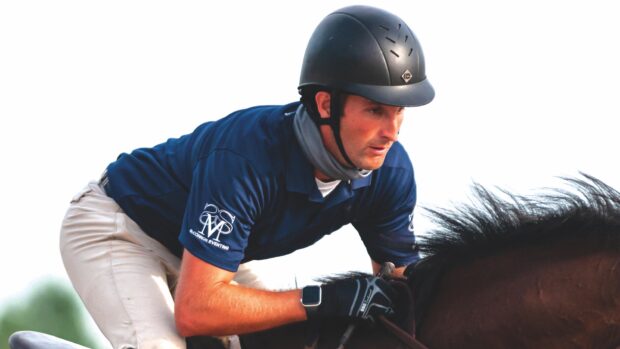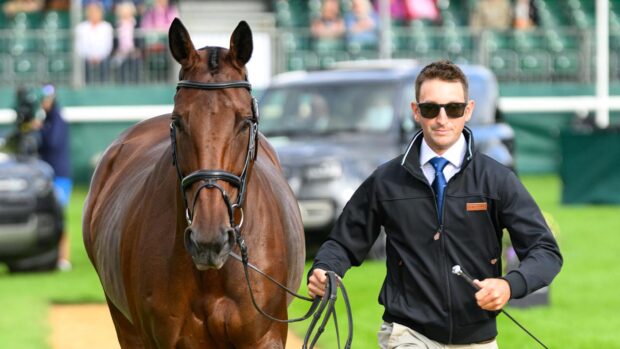Obstacle markings will be changed from orange to white at all British racecourses and point-to-point tracks by the end of next season.
The decision is based on improving safety in National Hunt racing and follows research carried out by Exeter University into equine vision.
It found that changing the wood and vinyl padding of take-off boards, guard rails and top boards to white provided increased contrast and visibility for horses, leading to improved jumping performance. Fluorescent yellow had a similar effect, but the colour faded rapidly in tests.
Leading British eventing course-designer Mike Etherington-Smith, who is equine safety advisor to British racing’s Horse Welfare Board, has led the push forward in this project, working alongside trainers, jockeys and racecourse representatives.
The nationwide roll-out was given the green light in November 2021 and the Horserace Betting Levy Board confirmed funding in January 2022.
“This important project is an example of how British racing uses advanced scientific and veterinary research to constantly improve racehorse welfare,” said Horse Welfare Board chairman Barry Johnson.
“Looking through the eyes of the horse to understand how they perceive their world, and making changes because of this new knowledge, shows how racing is continuously striving to increase the safety of all participants in our sport, both human and equine.”

What a human sees (left) and what a horse sees (right) at a fence with orange markers.
All 40 jump courses in Britain will change take-off markers, guard rails and top boards on their hurdles and fences from orange to white by December. Point-to-point courses will follow for the 2022/23 season.
The initial study, which took place in 2017 and 2018, was commissioned by the British Horseracing Authority (BHA), backed by the Racing Foundation. The “orange to white” project was progressed the following year but was put on hold due to the onset of the pandemic.
The research involved analysing 131 obstacles at 11 racecourses using cutting-edge camera equipment, to determine which colours would be most visible to a horse. Once identified, behavioural responses were then tested with 14 horses from Richard Phillips’ training yard in Gloucestershire.
“Having been involved in the research undertaken by Exeter University and having used white obstacles for over three years now, I am convinced that changing the colour of jumps will be of immense benefit to horses, riders and the sport as a whole,” said Richard.
Horses see colour differently to humans, as they have reduced dichromatic colour vision, so mainly see hues we would consider blue and yellow. This also means they are unable to tell apart shades of red, green and orange.
“The project is an example of how scientific research can lead to positive changes in human society and our interactions with animals and I’m delighted that the research we undertook has led to changes in the sport,” said Professor Martin Stevens, chairman of sensory and evolutionary ecology for the University of Exeter.
The new white obstacles will make their debut at Stratford on 14 March, followed by Hexham (17 March) and Newton Abbot (25 March) as part of the phased roll-out. They are already being introduced at racing’s main schooling grounds and will be in use throughout the summer jumping season.
“We are determined to drive constant improvement and to make reasoned, well-researched and evidence-based changes which further reduce risk in the sport on a long-term basis and which help to improve safety factors for our horses,” said James Given, director of equine health and welfare for the BHA and member of the Horse Welfare Board.
Caroline Davies, racecourse services director at the Racecourse Association and the racecourse representative on the Horse Welfare Board, added: “I am pleased to see the roll-out of the orange to white initiative take place across Britain’s racecourses, adding a further layer of care for our horses.
“This is an important step for British racing, underpinned by a plethora of research. The number of obstacles that racecourses will be changing is significant and is testament to the sport’s commitment to making continual improvements for all our participants.
“I am grateful for the widespread support of racing’s stakeholders and our funders to enable it to happen.”
You might also be interested in:

Subscribe to Horse & Hound magazine today – and enjoy unlimited website access all year round

How horses see colour
Find out why so many horses had trouble jumping the red pillar box fence at the Olympics

Examining the equine eye *H&H Plus*
What does an ophthalmic exam entail? Ria Chalder MRCVS explains all

6 tips from the top to conquer jumping spooky fences
showjumper Sarah Lewis, who competes up to two-star level and also previously competed to two-star level eventing, shares her advice

18 of the spookiest showjumping fences — would your horse go near any of these?
Horse & Hound magazine, out every Thursday, is packed with all the latest news and reports, as well as interviews, specials, nostalgia, vet and training advice. Find how you can enjoy the magazine delivered to your door every week, plus options to upgrade your subscription to access our online service that brings you breaking news and reports as well as other benefits.




